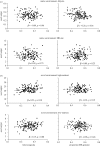Population admixture, biological invasions and the balance between local adaptation and inbreeding depression
- PMID: 20685700
- PMCID: PMC2992731
- DOI: 10.1098/rspb.2010.1272
Population admixture, biological invasions and the balance between local adaptation and inbreeding depression
Abstract
When previously isolated populations meet and mix, the resulting admixed population can benefit from several genetic advantages, including increased genetic variation, the creation of novel genotypes and the masking of deleterious mutations. These admixture benefits are thought to play an important role in biological invasions. In contrast, populations in their native range often remain differentiated and frequently suffer from inbreeding depression owing to isolation. While the advantages of admixture are evident for introduced populations that experienced recent bottlenecks or that face novel selection pressures, it is less obvious why native range populations do not similarly benefit from admixture. Here we argue that a temporary loss of local adaptation in recent invaders fundamentally alters the fitness consequences of admixture. In native populations, selection against dilution of the locally adapted gene pool inhibits unconstrained admixture and reinforces population isolation, with some level of inbreeding depression as an expected consequence. We show that admixture is selected against despite significant inbreeding depression because the benefits of local adaptation are greater than the cost of inbreeding. In contrast, introduced populations that have not yet established a pattern of local adaptation can freely reap the benefits of admixture. There can be strong selection for admixture because it instantly lifts the inbreeding depression that had built up in isolated parental populations. Recent work in Silene suggests that reduced inbreeding depression associated with post-introduction admixture may contribute to enhanced fitness of invasive populations. We hypothesize that in locally adapted populations, the benefits of local adaptation are balanced against an inbreeding cost that could develop in part owing to the isolating effect of local adaptation itself. The inbreeding cost can be revealed in admixing populations during recent invasions.
Figures


References
-
- Blossey B., Nötzold R.1995Evolution of increased competitive ability in invasive nonindigenous plants—a hypothesis. J. Ecol. 83, 887–889
-
- Lee C. E.2002Evolutionary genetics of invasive species. Trends Ecol. Evol. 17, 386–39110.1016/S0169-5347(02)02554-5 (doi:10.1016/S0169-5347(02)02554-5) - DOI - DOI
-
- Müller-Schärer H., Schaffner U., Steinger T.2004Evolution in invasive plants: implications for biological control. Trends Ecol. Evol. 19, 417–42210.1016/j.tree.2004.05.010 (doi:10.1016/j.tree.2004.05.010) - DOI - DOI - PubMed
-
- Prentis P. J., Wilson J. R. U., Dormontt E. E., Richardson D. M., Lowe A. J.2008Adaptive evolution in invasive species. Trends Plant Sci. 13, 288–29410.1016/j.tplants.2008.03.004 (doi:10.1016/j.tplants.2008.03.004) - DOI - DOI - PubMed
-
- Dlugosch K. M., Parker I. M.2008Founding events in species invasions: genetic variation, adaptive evolution, and the role of multiple introductions. Mol. Ecol. 17, 431–44910.1111/j.1365-294X.2007.03538.x (doi:10.1111/j.1365-294X.2007.03538.x) - DOI - DOI - PubMed
Publication types
MeSH terms
LinkOut - more resources
Full Text Sources
